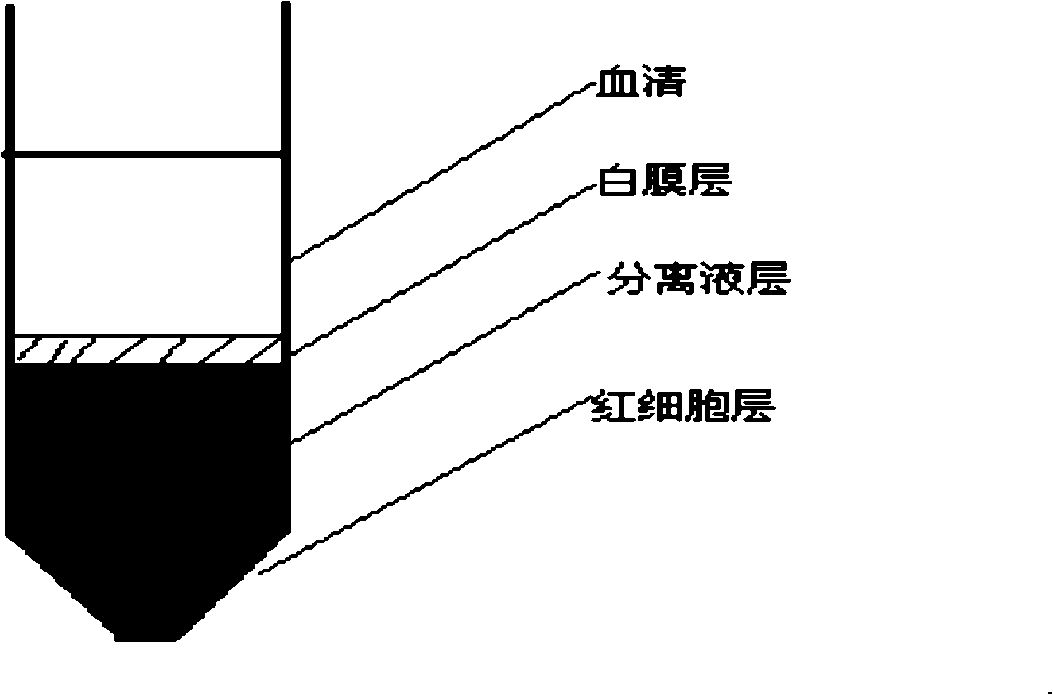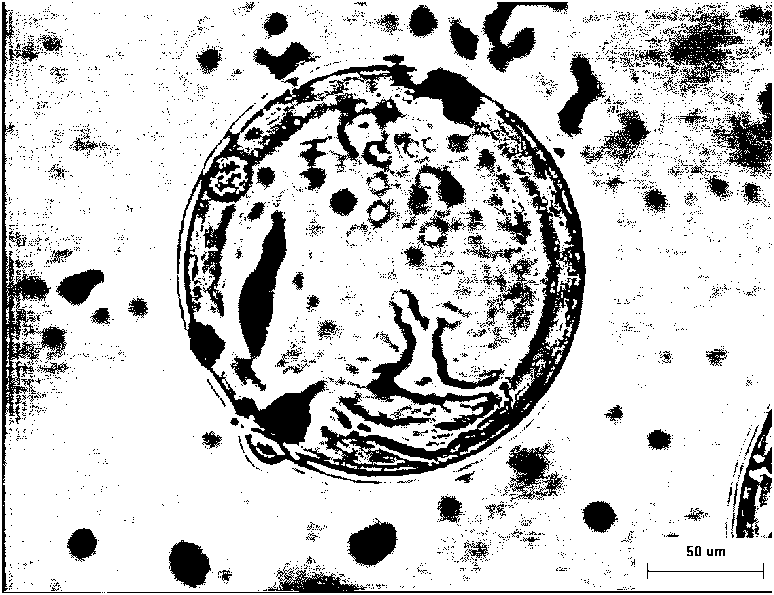Method for obtaining stem cell by using serum of same cord blood
A technology of umbilical cord blood and stem cells, applied in biochemical equipment and methods, microorganisms, tissue culture, etc., can solve the problem of limited application of the number of cells, and achieve a good effect of attached growth
- Summary
- Abstract
- Description
- Claims
- Application Information
AI Technical Summary
Problems solved by technology
Method used
Image
Examples
Embodiment 1
[0025] In this embodiment, serum for culture and mononuclear cells are simultaneously obtained from the same umbilical cord blood.
[0026] Umbilical cord blood comes from healthy puerpera who give birth at term or babies born at term by cesarean section, and the amount of cord blood collected is 120mL. After the umbilical cord blood is collected, mix it evenly with PBS at a volume ratio of 1:1, and use a density of 1.077g.mL -1 The Ficoll cell separation liquid was centrifuged at 2500 rpm for 25 minutes on a density gradient, and the volume ratio of the Ficoll separation liquid to the umbilical cord blood was 1:1-1:2. After centrifugation, as figure 2 As shown, the upper layer is serum, collected and placed in a sterile centrifuge tube for later use; the middle buffy coat layer was taken to obtain mononuclear cells (Mononuclear cells, MNCs), and the separated cells were washed twice with IMDM basal medium (1000rpm, 5 minutes), adjust the cell density for later use.
Embodiment 2
[0028] This example is the co-cultivation of UCB-HSCs and UCB-MSCs under static conditions.
[0029] The freshly isolated UCB-MNCs were divided into 2 × 10 6 cells.mL -1 The density was inoculated into a 6-well plate covered with cytodex-3 microcarriers in advance, and 20% of the same cord blood-derived serum was added, at 37°C, 5% CO 2 , 20%O 2 and under saturated humidity conditions for 12 days. Count every 24 hours and observe with light microscope.
[0030] Experimental results: The same serum derived from umbilical cord blood can well support the in vitro expansion of UCB-HSCs and UCB-MSCs, by figure 2 It can be seen that the attachment and growth of UCB-MSCs on cytodex-3 microcarriers is in good condition.
Embodiment 3
[0032] This example is the separation of UCB-HSCs and UCB-MSCs after co-cultivation under static conditions.
[0033] After the cultivation, use a dropper to blow up the cytodex-3 microcarriers into a suspension, suck out the suspension and place it in a sterile centrifuge tube. After standing for 5 minutes, the cytodex-3 microcarriers settle on the bottom layer, as Figure 4 shown. Aspirate the upper cell suspension, wash the cytodex-3 microcarrier with 5mL IMDM, let it stand again, and repeat three times.
[0034]The separated supernatant cell suspension was centrifuged to obtain UCB-HSCs, and the UCB-MSCs attached to cytodex-3 microcarriers were digested with 0.125% trypsin and 0.02% EDTA to harvest.
PUM
| Property | Measurement | Unit |
|---|---|---|
| density | aaaaa | aaaaa |
Abstract
Description
Claims
Application Information
 Login to View More
Login to View More - R&D
- Intellectual Property
- Life Sciences
- Materials
- Tech Scout
- Unparalleled Data Quality
- Higher Quality Content
- 60% Fewer Hallucinations
Browse by: Latest US Patents, China's latest patents, Technical Efficacy Thesaurus, Application Domain, Technology Topic, Popular Technical Reports.
© 2025 PatSnap. All rights reserved.Legal|Privacy policy|Modern Slavery Act Transparency Statement|Sitemap|About US| Contact US: help@patsnap.com



